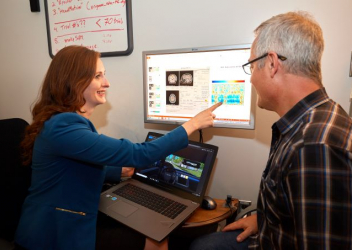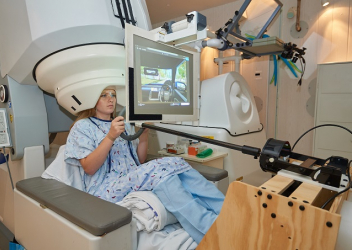Research In Action
Research In Action
Breadcrumb

As we in traffic safety know all too well, motor vehicle crashes are the leading cause of death for adolescents in the US and abroad. Many studies cite inexperience and lack of driving skills as key contributing factors to teen driver crashes, but a new study published in JAMA Network Open I conducted with colleagues at Children’s Hospital of Philadelphia, the Annenberg Public Policy Center at the University of Pennsylvania, and the University of Oregon suggests that brain development may also play a critical role.
Our study is the first paper to examine changes in cognitive development over time during adolescence and how these changes relate to the probability of crash involvement in young drivers. We found that teens with slower growth in working memory ability were more likely to report being involved in a crash.
Why Look at Working Memory?
During adolescence, the frontal lobe of the brain is still maturing, along with some cognitive abilities that help orchestrate complex behaviors, such as driving a vehicle. Also called executive functions, these cognitive abilities allow a driver to continuously monitor and update information in the moment, maintain attention on the task at hand, not get distracted by irrelevant information, and quickly switch tasks if needed.
All of these executive functions are crucial for safe driving which involves:
- a high level of attention for scanning, monitoring, and updating information about the vehicle and environment
- managing multiple subtasks (e.g., steering, adjusting speed, and using other in-vehicle controls)
- handling distractors (e.g., peer passengers and cell phones)
I led a previous review of literature in the field to determine how executive functions were associated with driving behaviors in young drivers. We found that one particular cognitive ability called “working memory” was consistently related to negative driving outcomes. The majority of papers showed that those with lower working memory self-reported more traffic citations and distracted driving behavior. They also performed poorly in carrying out simulated driving tasks as compared to peers with higher working memory.
What we know about working memory from the field of cognitive neuroscience is that it develops across adolescence and into the 20s, later than other executive function abilities. We also know that there is individual variability in how it develops; some teens develop working memory more quickly than others.
Helping to Explain Individual Teen Crash Risk
This newly published research supports the idea that cognitive development is related to crashes and could have important policy implications. For example, individual assessments of working memory ability could be used to identify teens at risk for crashes so that interventions can be offered to help teens drive safer. With this newfound knowledge we would ideally be able to individualize driver training or technologies like in-vehicle alert systems to assist new drivers who need them.
Future research should investigate how cognitive development during adolescence might impact a person’s ability to learn how to drive.
Read about the Neuroscience of Driving Program.
Watch the video below about working memory.





